

Designation:HWR-00 Destroid Monster (a.k.a. 'Heavy Howard') |

| 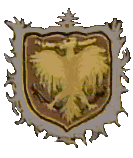
|
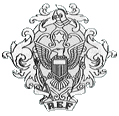
|
||
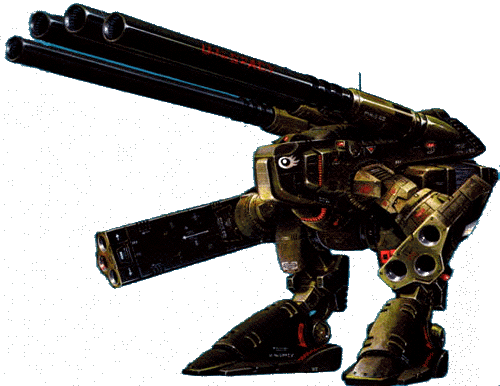
|
|||||
| Total Height: | 22.5 m |
| Total Length: | 41.1 m (w/ barrels) |
| 22.1 m (w/o barrels) | |
| Total Breadth: | 24.0 m |
| Weight: | 243.3 metric tons (unloaded) |
| 285.5 metric tons (with ammunition) |
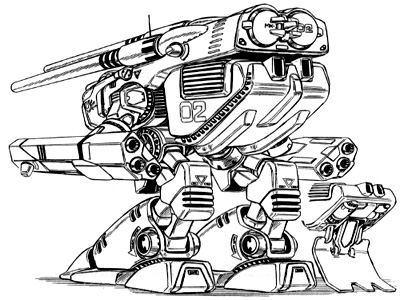
The armor on most of the Monster is composed of a standard Chobham laminar developed in the late 20th century and improved with the materials science advances made during the Robotech era. This armor was mainly designed to defeat projectiles and other kinetic weapons. The armor stops all small arms, heavy infantry weapons fire, and light mecha-mounted weaponry, and provides fair to good resistance to medium mecha-mounted weaponry, such as the Valkyrie's 55mm APFSDS round, and poor resistance to heavy mecha-mounted weaponry, such as the VHT's 120mm smoothbore shells. Only the hatches, gun-mounts, and other small targets are especially vulnerable.
The armor on the front surface is composed of a standard Chobham laminar reinforced by a depleted Uranium mesh on the outer plate. More dense than the standard Chobham, this armor was designed to defeat projectiles striking the forward surfaces of main battle vehicles, and is also effective against beam weapons. The armor stops all small arms, heavy infantry weapons fire, and light mecha-mounted weaponry, and provides good resistance to medium and fair resistance to heavy mecha-mounted weaponry, such as the VHT's 120mm smoothbore shells.
The Monster provides full protection from nuclear, biological, and chemical hazards, using a sealed cockpit environment activated by radiation and hazardous chemical sensors, or manually when biological warfare conditions are anticipated. The internal consumables supplies can provide atmosphere for three days maximum.
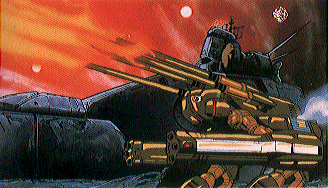
The Monster was developed by a Vickers-Continental consortium to a specification drawn up by the RDF procurement department for an artillery mecha with maximum armor-piercing capabilities, and the capacity to deliver multiple salvos in a very short time. This specification anticipated alien invasions using heavilly armored base encampments and was intended to provide the RDF with the firepower needed to pierce these theoretical armored strongpoints. The designers soon decided on the general form of the new destroid, a rather blocky body with numerous cannon barrels on top. However, the number and calibre of the armament remained uncertain until it was decided in early 2005 to go with quadruple 406 mm cannons, a caliber previously known mostly as the main armament of heavy battleships and admirably suited to the task of penetrating armor. This choice was controversial because the heavy calibre made for a very limited ammunition supply. Attempts to create diversity in the mission by adding specialised shells to the load-out (anti-air and high explosive) failed because of the relative inefficiency inherent to superheavy cannons and adverse effects on the already limited ammunition supply. As an unique, never repeated feature, the feet incorporated rollers to enable the mecha to drive over smooth surfaces, such as decking or level rock plains. Though the first prototypes were constructed in 2005, other projects gained priority and the project was essentially frozen until 2008, when the destroids were stationed on board the SDF-1 for operational testing.
From a technical point of view, the four main cannons of the Monster are the most interesting equipment on the mecha. Before the discovery of the light alloys that were used to forge the barrels, one 406mm barrel weighed almost as much as the Monster itself. With the new technologies, four of these large cannons could be mounted on a mobile mecha. In addition, the loading mechanisms used the revolver principle and a liquid propellant, which gave the cannons an unprecedented rate of fire for such large weapons. Previously, one shot in 30-40 seconds had been considered fast, but the new cannons could fire a round every five seconds. Shell technology benefited as well, with proximity-fuse anti-air and nuclear shells being developed for the Monster. All shells were of an extended range full bore design, with base bleed standard built in, which was already standard for Terran artillery, but in addition the HE and AP shells featured terminal phase guidance which made a first-round kill possible even at ranges up to 20km.
On the prototype, the mark I, the big guns were the sole armament. However, the production version, or the HWR-00 mk II, saw two triple-tube long range missile launchers as secondary weapons. Later proposals by the RDF Marines to decrease the main armament caliber to 381mm (15 inch) were accepted, but the production run was ended before the first Mk. III was begun. In this variant, the lower weight of the 381mm shell (~900 kg) increased the ammunition supply by 50% to 42 shells, while maintaining a good effect-on-target curve.
Although the Monsters was never called upon to serve in its designed role (the Zentraedi lacking the theorised armored ground base systems), they served the RDF and Southern Cross well, in all their theaters of engagement. The most common use was as a support mecha for heavy assaults. The heavy artillery from three or four of these large mecha can break up any resistance in a matter of moments. The mecha was also very useful as a base defense mecha, being capable of disrupting enemy attacks from beyond the horizon. However, once the Monsters ran out of ammunition, which they invariably did in a very short timeframe, they became low-mobility targets and a liability to their force companions.
The nickname 'Heavy Howard' is of obscure origin. The most likely hypothesis revolves around the fact that in procurement requests and battle deployment orders, the phrase "HWR-00 destroid" was often abbreviated "HWRD", and was pronounced "Howard". From 2020 on the Monsters were taken out of service and replaced with tracked 155mm artillery, the missions they were designed for never having materialised.
Return to UNDF Mecha Index.
Go to Robotech Reference Guide Home Page.
Robotech (R) is the property of Harmony Gold. This document is in no way intended to infringe upon their rights.
Content by Peter Walker and Pieter Thomassen, with Rob Morgenstern